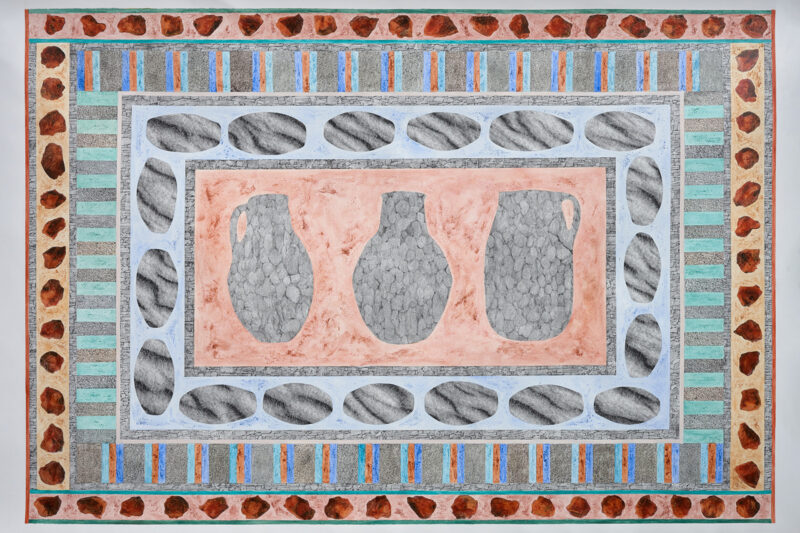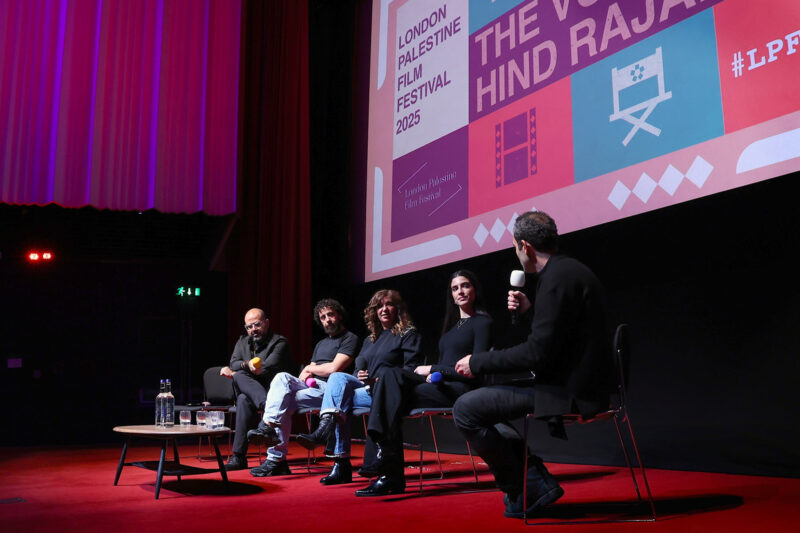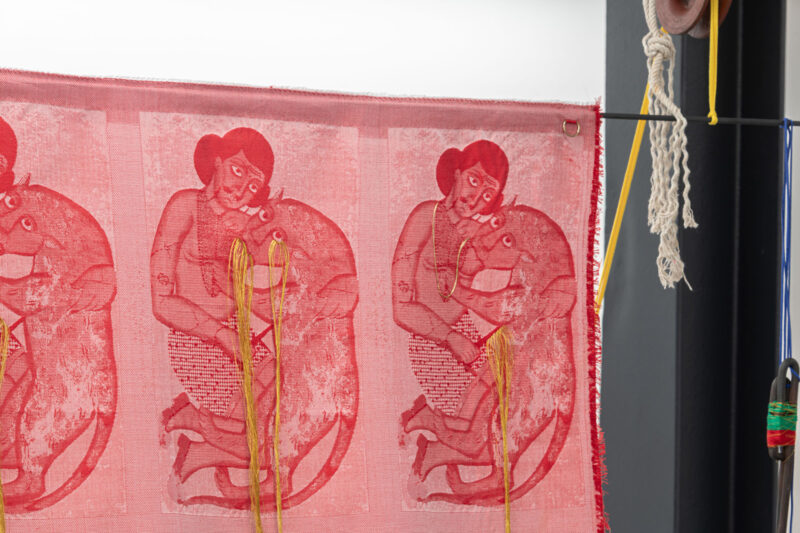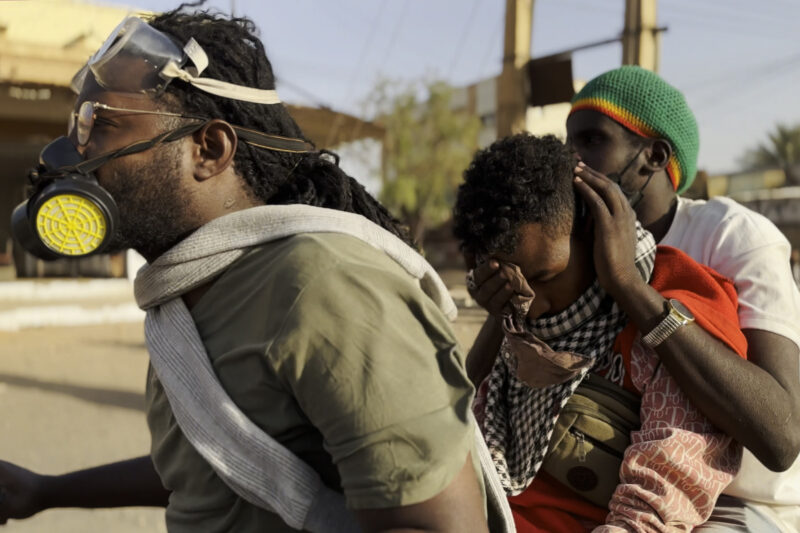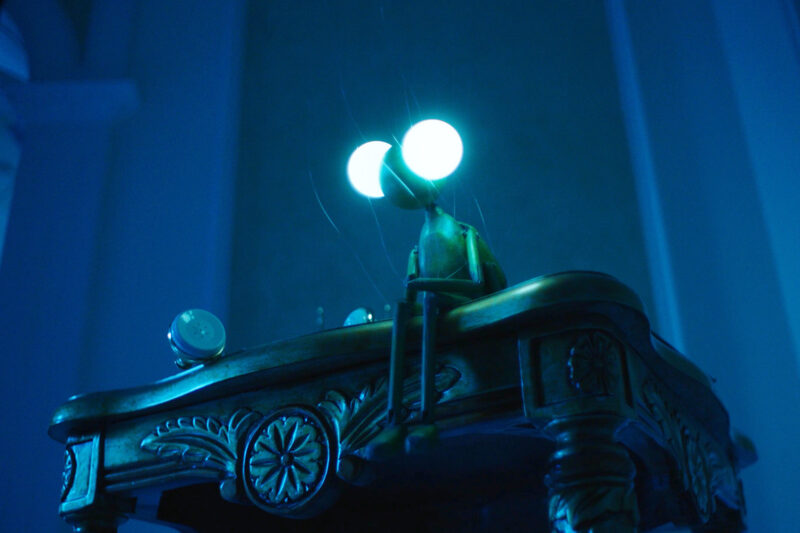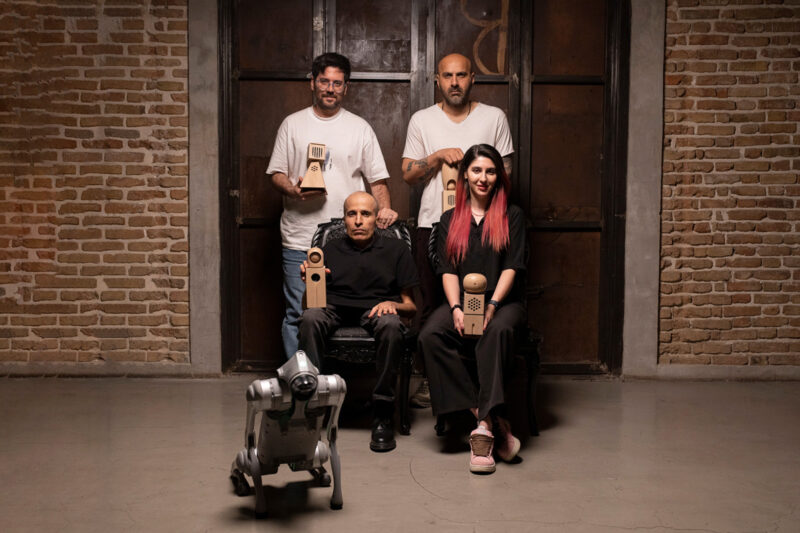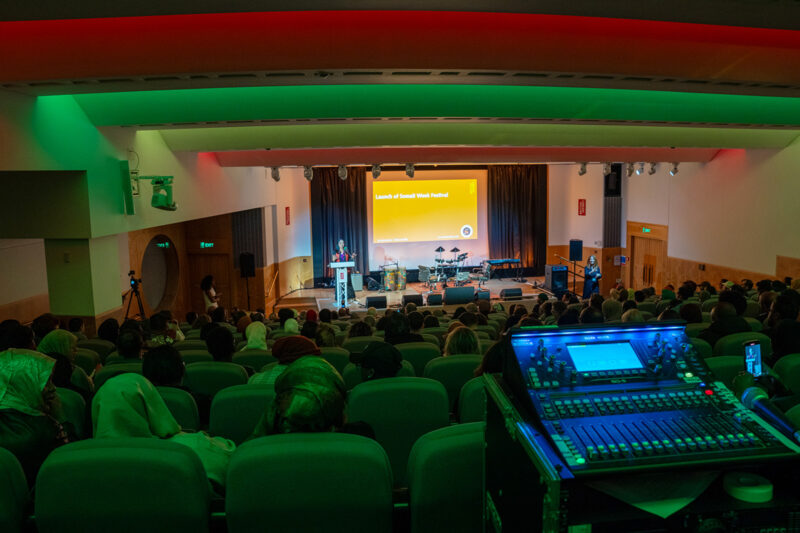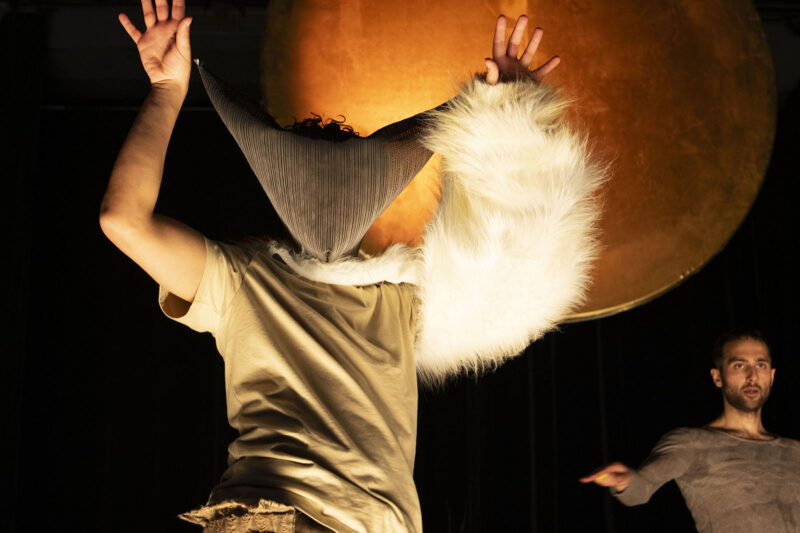New exhibition weaves together the many strands of Palestinian experience
From painting and sculpture to the intricate embroidery of the Palestinian History Tapestry project, Art of Palestine brings a wealth of culture to the heart of London
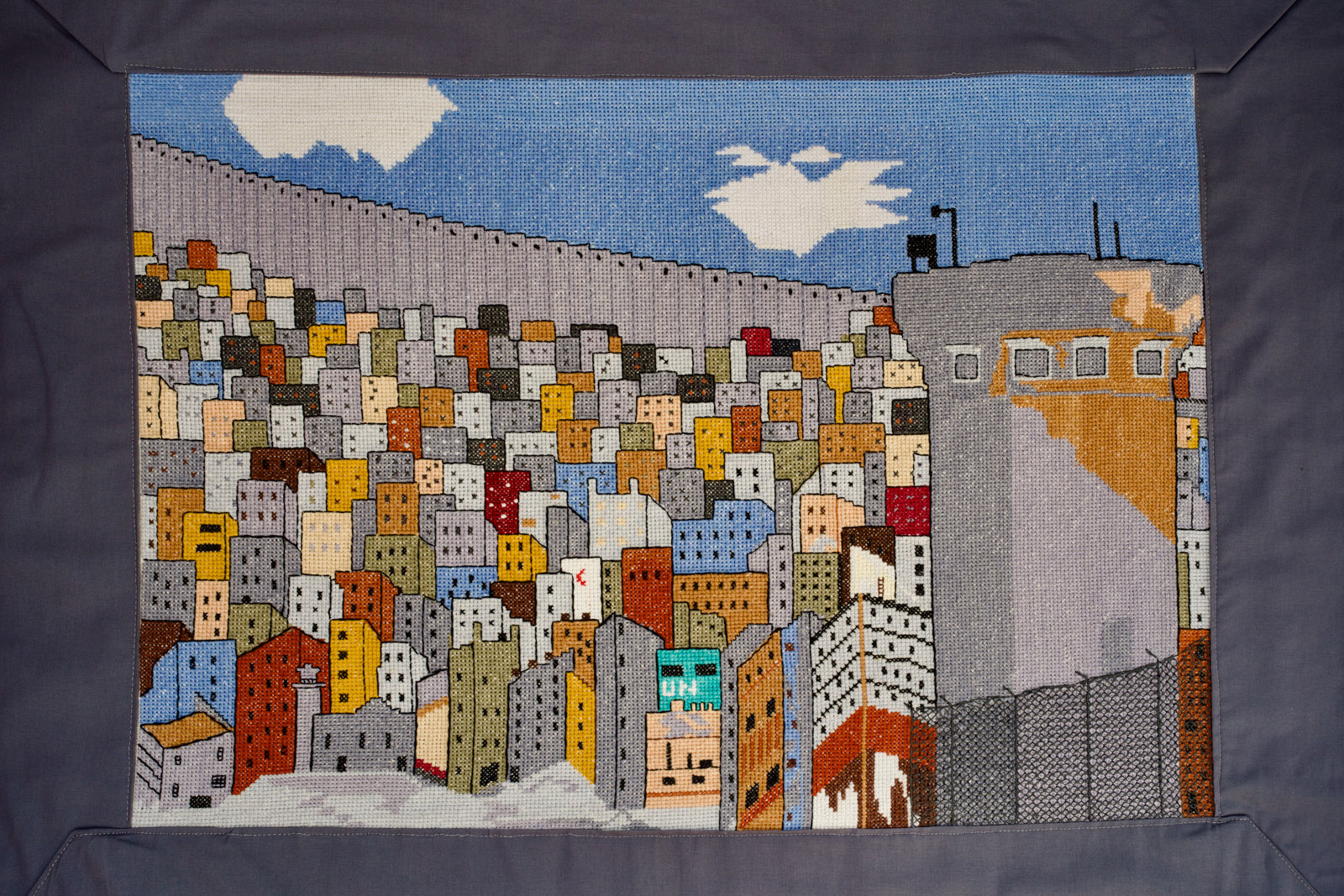
The vibrant culture, art and history of Palestine is being celebrated in a new exhibition opening in London on 27 September.
Art of Palestine, which will run until 21 December at P21 Gallery, opens almost one year after Israel began its war on Gaza in October 2023. Since then, an estimated 41,000 people have been killed and more than 95,000 injured.
Visitors will view the work of more than 25 creators, including the renowned abstract artist and activist Samia Halaby, muralist Taqi Spateen, and painter, sculptor and ceramicist Nabil Anani. Also featured are pieces by Gazan children, documenting their experiences of previous Israeli attacks on the territory.
A centrepiece of the exhibition is a collection of panels from the Palestinian History Tapestry project, which merged with the US-based Palestine Museum, responsible for the overall curation of the event, earlier in 2024. Launched in 2012, the tapestry project aims to document Palestinian heritage through intricate embroidery.
Many of the tapestries, which document Palestinian history from the neolithic period to the present day, are created by women in the West Bank, the Naqab desert, Gaza, Lebanon and Jordan.
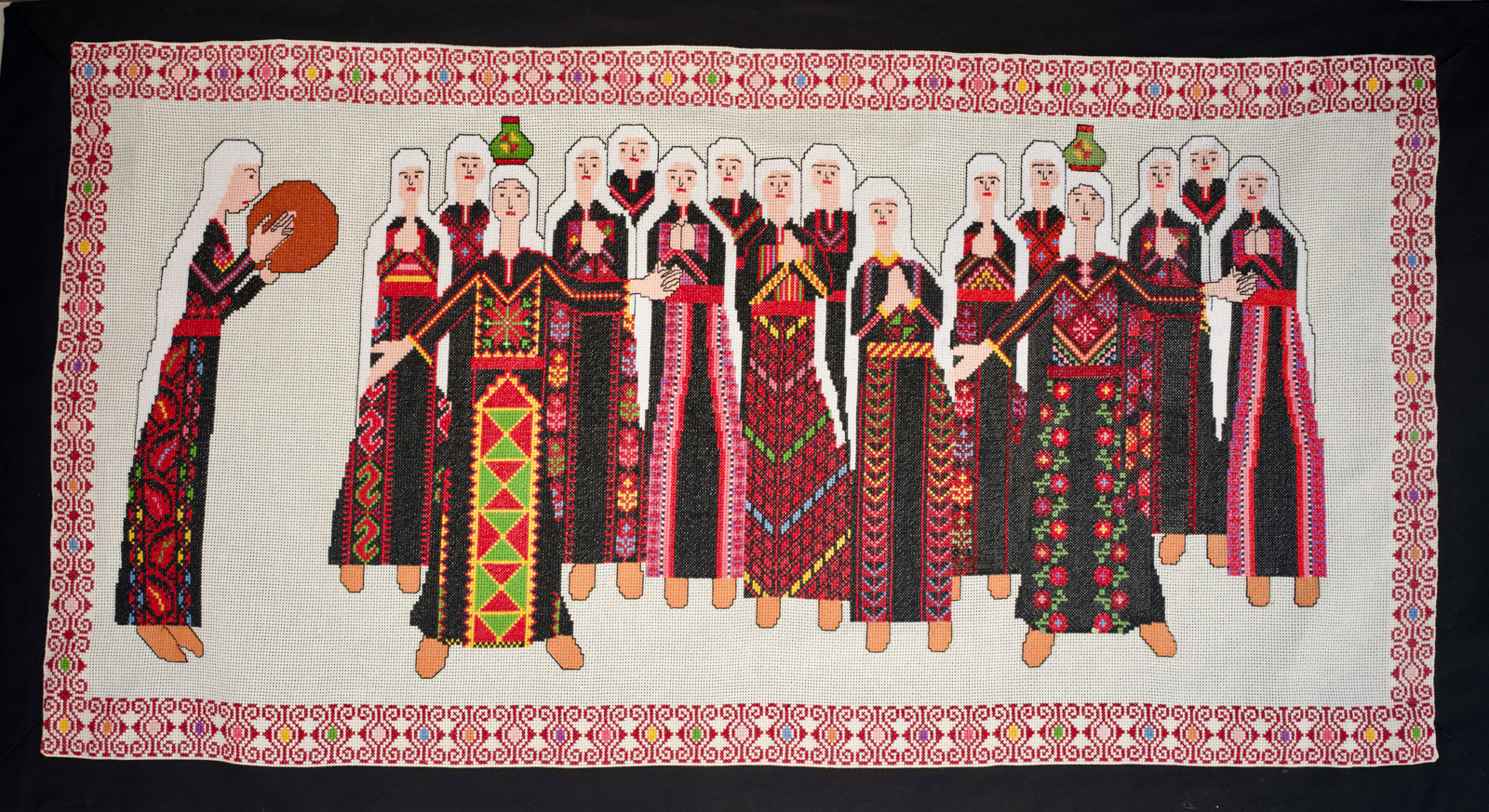
“There’s no more important time to talk about Palestine than now,” says founder of the tapestry project Jan Chalmers. “I want recognition of Palestinians. I want recognition of Palestinian work, of the embroidery that the women do.”
Each tapestry is stitched using a Palestinian embroidery method known as tatreez, traditionally used to adorn garments with designs specific to different regions of Palestine. For example, the moon and star of Bethlehem and the cypress tree of southern Palestine.
“They signify different things about the woman who is wearing them. From seeing the motifs and patterns, you can figure out where the woman is from, or their status and so on,” says Jehan Alfarra, a co-chair of the project.
Tatreez also tells stories about Palestinian life. “Traditionally, it was used as a form of expression. We’re using it as that too, but also as a way of recording and documenting history,” says Alfarra.
Some of the panels on display confront the ways in which war affects civilian lives. One depicts a homeless family carrying their belongings through ruins after Israel’s assault on Gaza in 2008. Another shows a refugee camp near the West Bank separation barrier, known by many Palestinians as the “apartheid wall”, and a military watchtower.
Others celebrate Palestinian culture, with one notable example showing a group of women at a henna party, a postage stamp and camels at Jaffa Port.
“Embroidery takes time,” says Alfarra. “It’s painstaking work. Every stitch takes effort and focus and concentration. Each panel represents a different theme and a different time. They show the Palestinian determination to continue to live on and to continue to struggle for freedom — despite all the obstacles and hardships they face.”
Art of Palestine: from the river to the sea will run at P21 Gallery until 21 December.
 Newsletter
Newsletter


